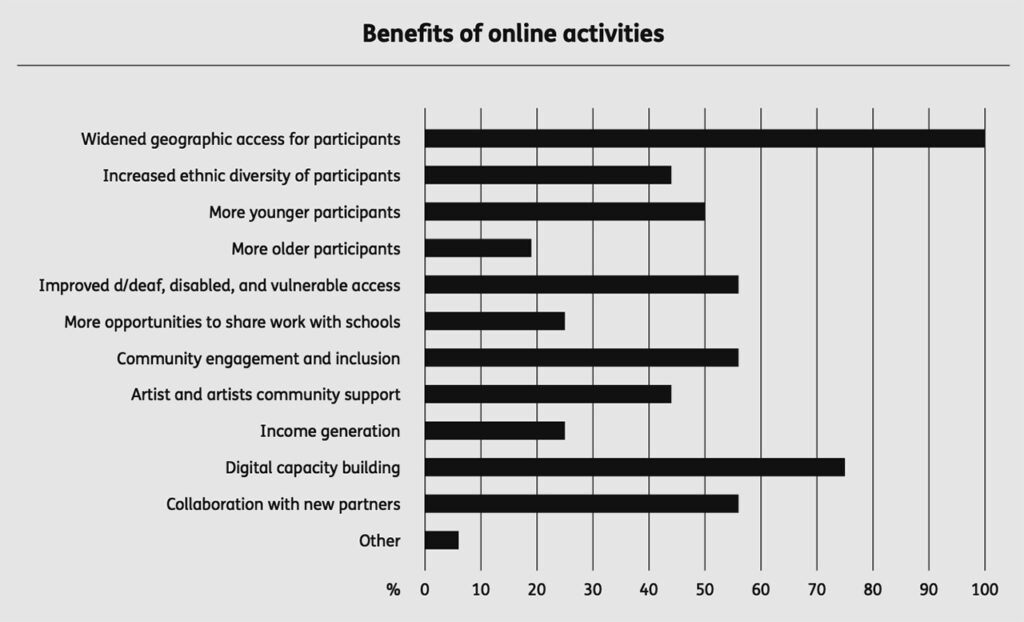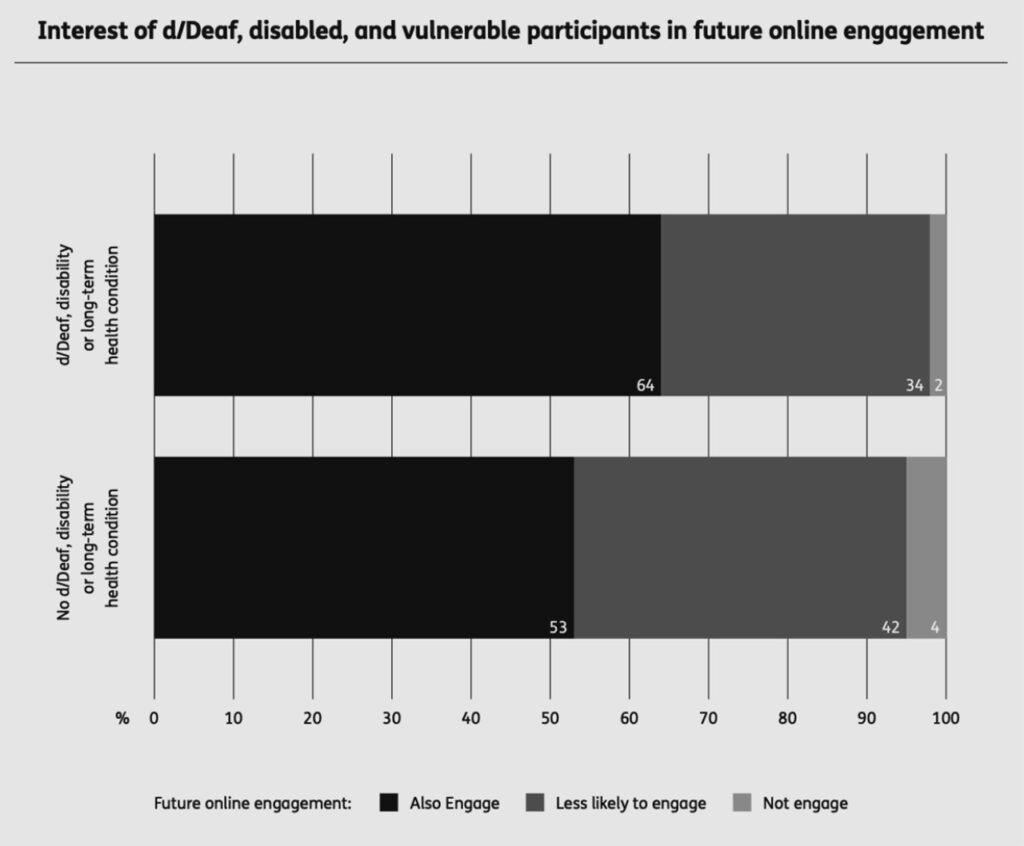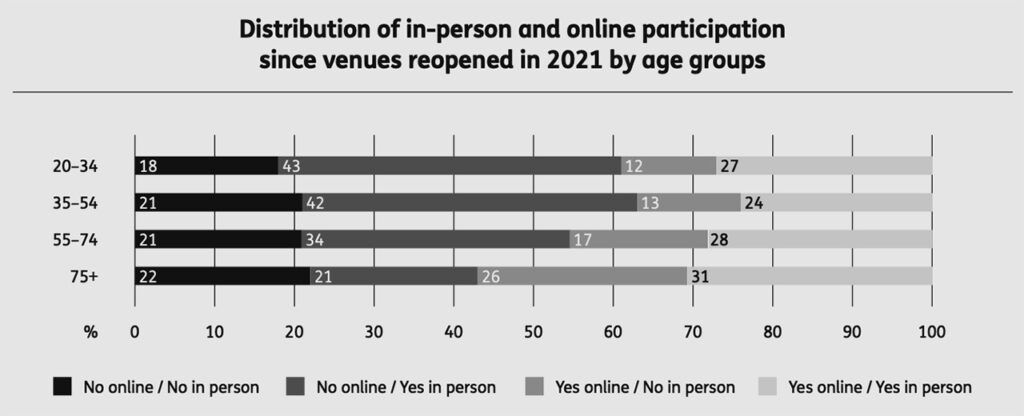Last year, the UK’s Arts and Humanities Research Council began developing its Digital Access to Arts and Culture report, an 18-month project that tracked how arts and cultural organizations in the UK used digital technology to improve their accessibility over the COVID-19 lockdowns.
Newly unveiled, the research found that, unsurprisingly, virtual programming has increased the reach of arts and cultural venues, with the widened geographic access being the leading benefit of online initiatives. Other pluses also include greater collaborative possibilities and community engagement.

According to the Digital Access to Arts and Culture report, the leading benefit of online programming is the broadened geographic access, with collaborative opportunities and community engagement also featuring. Image: Digital Access to Arts and Culture
However, these digital programs are also at risk of being discontinued due to a lack of funding and low income generation. Here are three key findings from the report highlighting the impact and future of virtual programming.
Reaching a young and diverse audience

The majority of disabled respondents noted their interest in online participation, indicating how digital has encouraged engagement among audiences with physical limitations. Image: Digital Access to Arts and Culture
For many arts institutions, engaging with younger audiences is a paramount yet tricky exercise. But the digital realm offers opportunities for venues to approach and reach young audiences on more accessible platforms. “Digital is completely raising the profile of dance organizations, adding a lot of social and cultural capital, [and] it’s allowing younger people, who can’t afford, or parents who don’t necessarily understand, the art to access and engage with what we’ve got,” says Martin Collins, Producer at Russell Maliphant Dance Company. “It’s going to grow a whole new generation of audiences.“
But beyond younger audiences, digital can also make the field of arts and culture less intimidating for ethnic minorities or non-majority racial communities who are not often catered to by Western institutions. And for audiences with disabilities or physical limitations, digital also provides effortless engagement. According to the study, a majority of 64 percent of disabled respondents noted their interest in online participation.
Barriers to digital participation and programs remain

Despite reopenings, the study found that older demographics were less inclined to participate in in-person events compared to younger audiences. Image: Digital Access to Arts and Culture
Still, the hard fact is that even if virtual programming can drastically improve an arts organization’s reach and accessibility, it’s difficult to sustain if digital doesn’t bring in revenue. The main issue is that “producing and distributing high-quality digital content is not cheap and rarely profitable.” Using the Bournemouth Symphony Orchestra as a case study, the research found that while the company sold about 800 tickets per concert, the per-ticket yield of £8 to £9 remains far lower than that of in-person tickets. Additionally, according to the report, 81 percent of venues stated that the biggest barrier for continuing digital was funding.
It’s why the report found that most UK theaters had reverted to in-person programming since the autumn 2021 season, with only 28 percent offering digitally native performances. This, in effect, disadvantages disabled and older audience members who, as the survey reported, are more likely to drop out of in-person participation.
Hybridity on the horizon
But with all of the above, there remain opportunities for cultural organizations to get creative with digital. The report highlights how Tank Museum has partnered with various platforms such as YouTube and Wargames to monetize its virtual programs, generating approximately $70,000 in income with its latter collaborator in 2020.
With its findings, the study finally offers the key recommendation of hybridity to capture a diversity of audiences. Distributing its content online and in-person would enable an organization to reach a variety of communities where they are, creating multiple ways for audiences to interact with its offerings. “The more routes that exist for engaging with arts and culture,” the report reads, “the easier it is to engage with, and the more inclusive it can become.”



